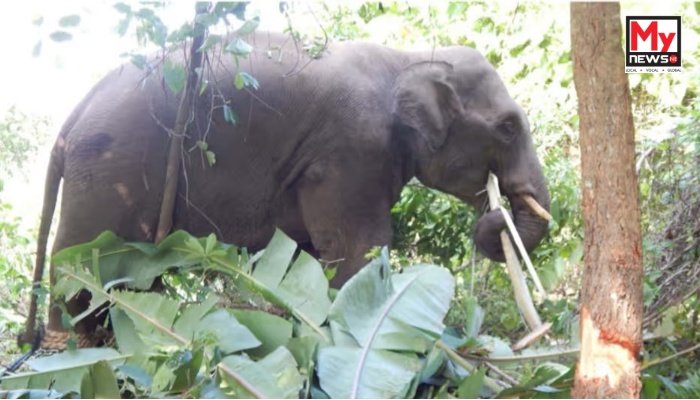Tripura Steps Up Human-Elephant Conflict Mitigation with Tech and Community-Driven Strategy
Agartala: In response to rising concerns over human-elephant conflict, Tripura’s Forest Department has launched an intensified strategy blending modern technology with grassroots engagement to protect both wildlife and rural communities.
With a population of only around 40 wild elephants concentrated mainly in Khowai, Dhalai, and Gomati districts, the state is taking proactive steps to ensure peaceful coexistence.
A major element of this effort is the radio collaring of wild elephants, enabling real-time tracking of herd movements. This initiative aids forest officials in monitoring migratory routes, managing elephant corridors, and issuing early warnings to nearby settlements to prevent surprise encounters.
A Forest Department report outlines multiple strategies underway, including the construction of tree houses (machans) for monitoring elephant movement and the planting of Congo Napier grass in habitats to provide food within forest zones. These habitat enrichments aim to reduce the animals’ need to venture into human-inhabited areas in search of sustenance.
To strengthen surveillance, covert infrared camera traps have been installed across critical areas to study elephant behavior. Simultaneously, salt licks and water holes are being developed inside the forest to meet the elephants’ dietary and hydration needs, reducing their incentive to stray.
Community involvement remains at the heart of the state’s approach. Local residents are being trained as wildlife volunteers and stationed in anti-depredation camps set up in high-risk zones. The department is also conducting regular awareness campaigns to educate villagers about elephant behavior and safe practices during possible encounters.
In addition, anti-depredation kits and seasonal uniforms are being distributed among volunteers to ensure their preparedness. Training sessions are ongoing for forest guards, villagers, and response squads to ensure coordinated and effective intervention when elephants approach human settlements.
Tripura’s integrated strategy—merging technology, ecological improvements, and public participation—marks a promising model for mitigating human-wildlife conflict while promoting a sustainable balance between conservation and community safety.

